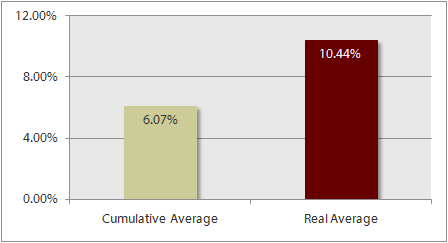If you were a concertmaster in the 2006/07 season, odds are you enjoyed a sizeable increase in annual compensation. In fact, the average concertmaster noticed the largest percent increase in compensation since the 2001/02 season…
WHO IS THIS CONCERTMASTER PERSON?

For those not already familiar with the concertmaster position, this is the title reserved for the principal seat within the 1st violin section. More often than not, this is the musician you see walking out on stage at the beginning of the concert to initiate the orchestra’s tuning process before the conductor emerges.
Although concertmasters are included within every orchestra’s collective bargaining agreement, they also negotiate a separate contract with the orchestra detailing compensation and additional duties exclusive to their position. For example, it isn’t uncommon for a concertmaster to be featured as a soloist with their orchestra at least once a year. As such, their annual income will fluctuate based on the number of solo appearances they negotiate with their organization.
Additionally, concertmasters are required to perform any of the numerous internal solos incorporated into any given piece of music (such as the famous violin solo from Scheherazade). Beyond actual performing duties, concertmasters (along with other principal seat string musicians) are usually required to perform some additional duties such as bowings. Bowings are markings placed throughout a string player’s sheet music that indicate which direction to move the bow. This allows each section of strings to move their bows in unison and enhance to the sense of phrasing a conductor wishes to use.
A common perk associated with many concertmaster personal contracts are clauses excluding them from having to perform during some non-masterwork oriented concerts (such as holiday, pops, or educational concerts). As this clause is not uniform, the frequency and type of concerts concertmasters are excluded from participating in vary from one musician to the next. It is also one of the reasons why orchestras may have one or two additional violinists within the orchestra who serve under the title of associate or assistant concertmaster.
Regardless of the additional clauses a concertmaster negotiates in their personal contract, they are afforded the same base workplace protection and representation guaranteed all musicians under the organization’s collective bargaining agreement.
WHERE THE NUMBERS COME FROM
All data presented in these reports coincide with the corresponding documentation from the 2006/07 season. In order to provide information that is as accurate as possible, data for the 2006/07 season is gathered from the following sources:
- Concertmaster compensation figures were obtained from the individual’s respective orchestra’s IRS Form 990.
- Total expenditures were also obtained from each respective orchestra’s IRS Form 990.
- Base Musician compensation figures were obtained from compensation records collected by the American Federation of Musicians (AFM) and the International Guild of Symphonic, Opera, and Ballet Musicians (IGSOBM).
Adaptistration makes no claim to the accuracy of information from documents compiled or reported by external sources. If you have reason to believe any of the information is inaccurate or has changed since reported in any of the above sources and you can provide documentation to such effect, please feel free to send in a notice.
WHAT THE NUMBERS DON’T SHOW
It is important to remember that the numbers shown do not always convey a complete compensation picture. For example, a concertmaster may have had a large increase in salary because they had twice the number of featured solo appearances for this season compared to last. Likewise, they may have left the position after the 2006/07 season and, per terms of their individual contract, received a sizeable severance or deferred compensation package. As such, the cumulative compensation reported under those conditions may artificially inflate or reduce annual earnings.
The Base Musician compensation figures do not include any additional payments including but not limited to outreach services and minimum overscale and/or seniority payments, all of which are more common for International conference of Symphony and Opera Musicians (ICSOM) musicians as opposed to their Regional Orchestra Player Association (ROPA) peers. Finally, these figures do not include any of the opera, ballet, or festival orchestras which are members of ICSOM, IGSOBM, or ROPA.
A NOTE ABOUT ROPA CONCERTMASTER FIGURES
ROPA concertmasters have been incorporated into this report due to how few are actually reported on their respective IRS Form 990. There are two primary reasons why this is the case. First, the IRS only requires nonprofit organizations to list the top five employees and private contractors paid over $50,000 on their Form 990. Second, because ROPA musicians earn so much less than their ICSOM peers, there are only a few ROPA ensembles that pay their concertmaster enough to warrant including that individual on the Form 990. Furthermore, concertmasters in other ensembles who do earn over $50,000 may not earn enough to be considered in the top five paid employees.
As a result, the six ROPA concertmasters that were reported are included in this compensation chart; however, due to the nature of how the data is compiled, they have been filtered from the overall averages.
NEW FEATURE: REAL AVERAGES
To date, each year of the Orchestra Compensation Report has provided overall increases and/or decreases in average compensation; however, those figures don’t provide an entirely accurate picture. For example, factoring in compensation data from orchestras that did not pay a music director for an entire season or paid an incoming and outgoing concertmaster in the same season can easily skew that average up or down. As such, this year’s report introduces the average change in compensation from one season to the next using “real averages,” which are based on figures that filter out incomplete compensation records.
Consequently, when the real average filters are applied to all concertmaster compensation figures for the 2006/07 season, the data indicates that the average concertmaster serving a full season of employment experienced an average increase in compensation that was about 1¾ times as high as the overall average, as illustrated in the chart below.

TOP EARNERS AND QUICK FACTS


- Compared to figures from the previous season, the average compensation for the Top 10 highest paid concertmasters increased by 5.5 percent to $380,981.
- The Cleveland Orchestra’s concertmaster set a new all time high compensation level at $478,079 which is 11.47 percent higher than the previous record set by the New York Philharmonic concertmaster from the 2004/05 season of $428,860.
- The seven year average change in concertmaster compensation (through the 2006/07 season) is nearly identical to the average change in total expenditures, greater than the average change in base musician compensation, but less than the average change in executive and music director compensation.




Seattle Symphony not only has their own Concertmaster but imports three Guest Concertmasters for rotational purposes. They must have ample funding to do so!
In the concerts I’ve attended for reviewing purposes, the Assistant Concertmasters have not been allowed to move up, except when the orchestra’s Principal Second played as Concertmaster for James DePreist end of May.
Wow! I shoulda practiced harder!